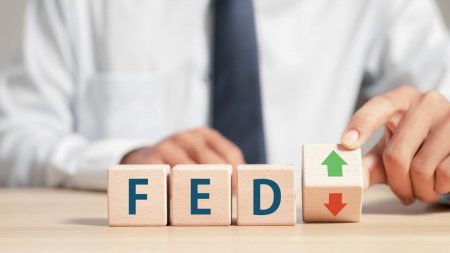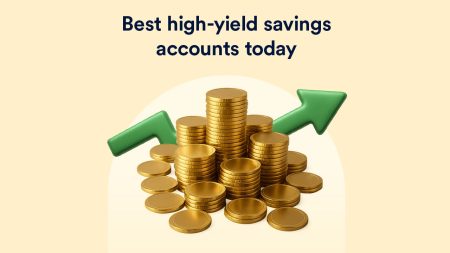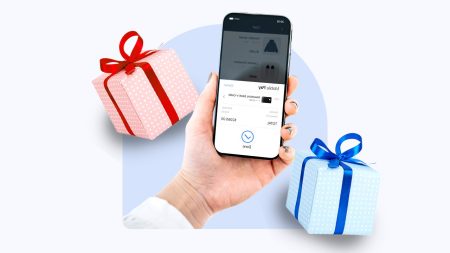Key takeaways
- Popular assumptions about credit and repayment are often wrong.
- Interest rate changes do not affect loan payments as much as you might think.
- Student loan consolidation and refinancing your student loans aren’t always financially beneficial.
- Most students need a cosigner to qualify for private student loans.
Many misconceptions about student loans can lead borrowers to make costly mistakes. Here are some of the most common myths.
Myth #1: Cutting the interest rate in half cuts the monthly loan payment in half.
Some borrowers believe that doubling the interest rate doubles the monthly payment, or that halving the interest rate halves the payment.
In reality, student loan payments include both principal and interest, so the relationship is not one-to-one.
For example
A $10,000 loan at 5 percent interest over 10 years has a monthly payment of $106.07, with interest accounting for 21 percent of total payments over the life of the loan.
If the interest rate doubles to 10 percent, the payment increases to $132.15, a 25 percent increase, not double. Interest now represents 37 percent of total payments, but the payment itself does not double because part of each payment still goes toward principal.
Myth #2: Federal loan consolidation lowers your interest rate.
Many borrowers assume that consolidating federal loans will reduce the interest rate. However, the interest rate on a Federal Direct Consolidation Loan is simply the weighted average of the original loan interest rates, rounded up to the nearest 1/8th of a percentage point.
The weighted average will be lower than the highest interest rate, but also higher than the lowest interest rate. The new interest rate more or less preserves the cost of the loans. The total monthly loan payments will be similar if the length of the repayment term is similar.
Keep in mind:
Consolidation may still be beneficial if you want to simplify repayment by combining multiple loans into one, but it won’t save money through a lower interest rate.
Myth #3: Refinancing student loans always saves you money.
Refinancing student loans can reduce costs, but only under the right circumstances. If you refinance to a lower interest rate while keeping a similar repayment term, you may save money.
However, refinancing into a longer repayment term — even at a lower interest rate — can cost more in the long run.
For example, increasing the length of the loan repayment term reduces the monthly payment but increases total interest paid, as interest accrues over a longer period.
Borrowers should weigh short-term payment relief against long-term costs before refinancing.
Myth #4: Most borrowers can get a private student loan without a creditworthy cosigner.
Most undergraduate students have a thin or non-existent credit history, making it difficult for them to qualify for a private student loan without a cosigner.
According to a 2024-25 report by Enterval, 96 percent of private student loans for undergraduate students and 71 percent of private student loans for graduate students had creditworthy cosigners. Overall, 94 percent of private student loans require cosigners, largely due to the high cosigner rate for undergraduate loans.
Keep in mind:
When a borrower misses a payment, lenders immediately start seeking repayment from the cosigner. A cosigner is not really a backup borrower, but rather a co-borrower, equally responsible for repaying the debt.
While some students are able to qualify for private student loans without a cosigner, they typically have strong credit histories and satisfy secondary credit criteria, such as a stable income above a certain threshold, a low debt-to-income ratio, and long-term employment with their current employer. These factors help reduce the risk of non-payment, so while approval without a cosigner is rare, it’s possible.
Myth #5: You will have to pay a fee if you pay off your student loans early.
Both federal and private student loans do not have prepayment penalties. This means you can prepay the debt or refinance it without having to pay anything extra.
The Higher Education Opportunity Act of 2008 (P.L. 110-315) amended the Truth in Lending Act (TILA) to ban prepayment fees on private student loans.The terms and conditions of federal education loans, as specified in the Higher Education Act of 1965 (P.L. 89-329), allow borrowers to prepay their loans without having to pay a prepayment penalty.
There are similar bans on prepayment penalties in the Federal Family Education Loan Program (FFELP), stating that the borrower is entitled to “accelerate without penalty” repayment of their federal education loans in whole or in part.
When a borrower decides to make an extra payment on their student loan, it is applied first to late fees, then outstanding interest, and last to the principal balance of the loans.
If the borrower is paying off the loan balance in full, they will need to include any interest that has accrued since the most recent payment. The loan servicer can provide the payoff amount upon request.
If the borrower does not pay off the loan balance in full, the prepayment will be treated as an early payment of the next installment(s) of their loan, unless they specify that it should be treated as an extra payment.
Keep in mind:
Some FFELP lenders provide borrowers with special discounts. These discounts will be lost if the borrower prepays the loan. This is not considered a prepayment penalty because the discounts are not included in the loan’s promissory note.
Myth #6: Federal student loans stop accruing interest during a forbearance.
Federal and private student loans continue to accrue interest during periods of non-payment, such as forbearances and deferments.
The federal government does pay the interest on subsidized Federal Direct Stafford Loans during a deferment, and on both subsidized and unsubsidized loans during a cancer deferment. But, otherwise, the interest will continue to accumulate and will be added to the loan balance.
The loan does not stop charging interest just because you stopped repaying the debt.
Myth #7: Shopping around for a lower interest rate will hurt your credit score.
Applying for multiple private student loans used to slightly lower your credit score, typically by about five points or less.
However, credit bureaus now recognize when borrowers are shopping around for the best loan terms. If you submit multiple loan applications within a short timeframe, they are treated as a single hard inquiry, minimizing any negative impact on your credit score.
Additionally, some lenders perform a soft inquiry to assess your eligibility and potential interest rate. Since soft inquiries do not affect your credit score, you can compare loan offers without penalty. A hard inquiry is only triggered when you formally commit to borrowing the loan.
Myth #8: You don’t have to repay your federal student loans if you drop out of college.
You are required to repay your federal student loans even if you dropped out of college, did not get a job after graduation, or are dissatisfied with the quality of your education.
The main exception is when you are unable to complete your education because your college closed. You may be eligible for a closed school discharge of your federal student loans if your college closed while you were enrolled or in an approved leave of absence or within 180 days of your withdrawal. There may also be tuition recovery funds that can be used to repay private student loans.
Money tip:
You may be able to apply for a borrower defense to repayment discharge if the college defrauded or misled you.
Myth #9: Eligibility for a federal student loan is based on your credit score.
Eligibility for a federal student loan does not depend on your credit score, but eligibility for some loans may depend on your credit history.
Qualifying for a Federal Direct Stafford Loan does not depend on the borrower’s credit scores, credit history, income, debt-to-income ratios or duration of employment with the borrower’s current employer.
The Federal Direct PLUS Loan, however, requires the borrower to not have an adverse credit history. An adverse credit history involves looking for any of the following:
| In the last two years… | In the last five years… |
|---|---|
|
Debt totalling more than $2,085 that is:
|
|
If a PLUS loan borrower has an adverse credit history, they may still qualify for the loan with an endorser, which is like a cosigner. The student on whose behalf the PLUS loan is borrowed cannot serve as the endorser on the loan.
However, unlike with a private student loan, eligibility for a PLUS loan does not depend on credit scores, income, debt-to-income ratios or duration of employment with the borrower’s current employer.
Myth #10: Refinancing your federal student loans into a private loan will save you money.
You may be able to qualify for a lower fixed interest rate on a private student loan if you or your cosigner have excellent credit. But less than 10 percent of borrowers qualify for the lowest advertised interest rate on a private student loan.
Should you refinance your federal student loans?
Refinancing your federal student loan means giving up borrower protections and doesn’t guarantee a lower rate or monthly payment.
Read more
Read the full article here









